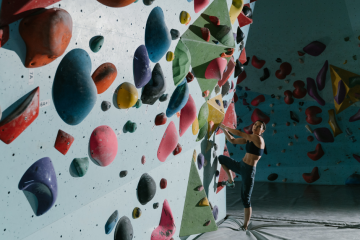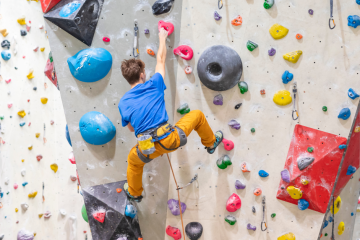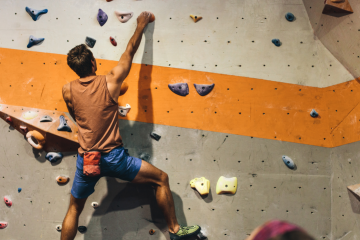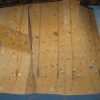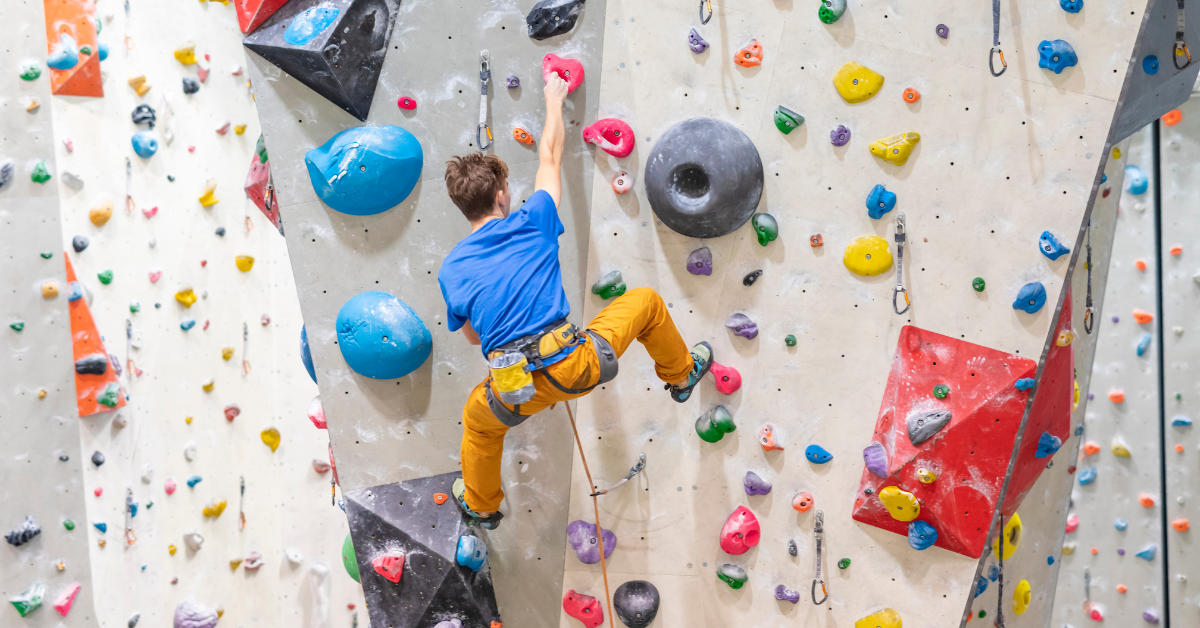
What To Wear Indoor Rock Climbing
For many climbers, indoor rock climbing was their entry point into the climbing world, which usually meant people needed to learn what to wear.
Obviously, turning up to the climbing wall in the wrong clothes isn’t the best way to learn. Yes, you can do it, but it’s definitely not the best way.
Even when you’re at the wall, it can be pretty challenging to get a read on what you should be wearing indoor rock climbing. Everyone there will be wearing different things.
So, what should you wear while rock climbing indoors?
The simple answer would be shorts and a T-shirt, you can’t go wrong with that, right?
Well, the long answer is a little bit more complicated, and that’s what will be discussed in the rest of this article.
Let’s take a look:
What You Should Wear Rock Climbing Indoors
It wouldn’t be very beneficial to you to start listing off various brands of clothing for you to choose from.
Everyone has different styles and requirements for what they are looking for in climbing clothing, so providing you links to my favorite climbing clothing isn’t going to help you.
Instead, we’re going to be talking about what makes good clothing for the top and bottom half of your body.
What Makes The Perfect Clothing For Your Top Half?
Understanding the properties that make the perfect indoor climbing T-shirt is extremely beneficial when the time comes to make your purchase.
With that said, here are some factors climbers should look out for when looking for the perfect T-shirt to wear indoor climbing:
- Materials: T-shirts should be made with moisture-wicking and breathable materials. Ideally, it should be a synthetic blend (polyester, for example) or a merino wool. These materials help keep climbers dry because they wick the sweat from the body. And this can help prevent chafing and make you feel more comfortable.
- The Fit: Choosing the right fit is vital if you want to have a good climbing experience because it allows for a full range of motion. Try to avoid T-shirts that are tight-fitting or too loose.
- Look For Some Stretch: T-shirts that stretch will help to increase mobility while at full stretch trying to reach the next hold.
- Seams: Something that many people don’t look at when looking for a new climbing T-shirt is the seams. Ideally, you should look for flatlock seams because they help to reduce chafing and discomfort.
Again, it’s important to understand that the best climbing shirt for indoor climbing will vary between people.
But, using the points noted above should help any potential climber find the best T-shirt for their bodies.
What Makes The Perfect Clothing For Your Bottom Half?
When looking for clothing for the bottom half of the body, things can feel a little bit more complicated. And it’s not just about deciding whether trousers or shorts are the best.
So, let’s take a look at a few of the key factors climbers should be looking at when searching for the perfect indoor climbing clothing:
- Fit & Design: When choosing an item of clothing for the bottom half of your body, you really need to make sure it’s going to be comfy, especially if you’re going to be climbing all day:
- Articulated Knees: Pants featuring articulated knees are crafted to conform to the natural curvature of your legs, promoting increased flexibility and mobility.
- Gusseted Crotch: The inclusion of a gusseted crotch offers extra space and flexibility in the groin region, preventing seams from restricting your range of motion.
- Adjustable Waist: Many climbing pants incorporate an adjustable waistband to ensure a snug and comfortable fit tailored to individual preferences.
- Shorts vs. Pants: Choosing between shorts and pants hinges on personal preference and prevailing weather conditions. While shorts afford greater freedom of movement and breathability, they may leave your legs susceptible to scrapes and abrasions.
- Fabric: The choice of material for your clothing plays a crucial role in its performance. Consider the following aspects:
- Flexibility: Opt for trousers or shorts crafted from stretchy materials such as nylon or spandex blends. These fabrics facilitate unimpeded movement during climbing activities.
- Durability: Given the abrasive nature of bouldering surfaces, select a robust fabric that resists tears and abrasions to ensure the longevity of your clothing.
- Moisture-Wicking: Prioritize materials designed to wick moisture away from your skin, promoting a dry and comfortable experience during demanding climbs.
- Pockets and Features: When selecting trousers or shorts, features add significant value. While not essential, they can certainly enhance convenience:
- Pockets: Evaluate the quantity and positioning of pockets. Climbers may lean towards minimalist designs with fewer pockets to avoid hindrance during climbs, while others may prefer more storage options.
- Brush Holders: Some climbing trousers come equipped with built-in brush holders, facilitating hold cleaning and grip maintenance.
- Chalk Bag Loop: Seek out a loop or clip designed for attaching your chalk bag, ensuring quick access to chalk during climbs.
- Elastic Ankle Cuffs: Trousers featuring elastic ankle cuffs can effectively secure them in place, preventing interference with your footwork.
What You Shouldn’t Wear Climbing Indoors
Before parting ways, let’s delve into some crucial considerations on what not to wear when bouldering:
Cotton Clothing
Avoid cotton as it absorbs moisture and fails to wick away sweat effectively, leading to discomfort, chafing, and prolonged wetness, particularly in cooler conditions.
Baggy or Loose Clothing
Steer clear of excessively loose attire that can snag on holds, rocks, or climbing gear, posing a risk of accidents or injuries. It may also impede your range of motion.
Jewelry or Accessories
Refrain from donning rings, bracelets, or necklaces, as they can entangle with holds or climbing equipment, potentially causing finger injuries. Remove watches or fitness trackers with protruding features that might interfere with handholds.
Non-Climbing Footwear
Opt for specialized climbing shoes over regular sneakers or shoes with thick rubber soles designed for other sports, ensuring better precision and grip.
Excessive Layers
While layering is essential, wearing too many bulky layers can restrict movement and cause overheating. Dress appropriately for the weather and adjust layers accordingly.
Final Thoughts & Takeaways
Nailing down the perfect gear for your first bouldering adventure can be a bit overwhelming. That’s exactly why I wanted to share this article – no one wants to feel like the odd one out, and I genuinely hope this helps sort things out.
Above all, remember to go for something that ticks all the boxes mentioned, but more importantly, go for what makes you feel good. Comfort is key.
If you’re feeling a bit lost, I highly recommend checking out some climbing brands like Prana, Patagonia, Black Diamond, Mammut, and others. Trust me, their outdoor-focused gear is a game-changer, making your bouldering journey a whole lot smoother.

